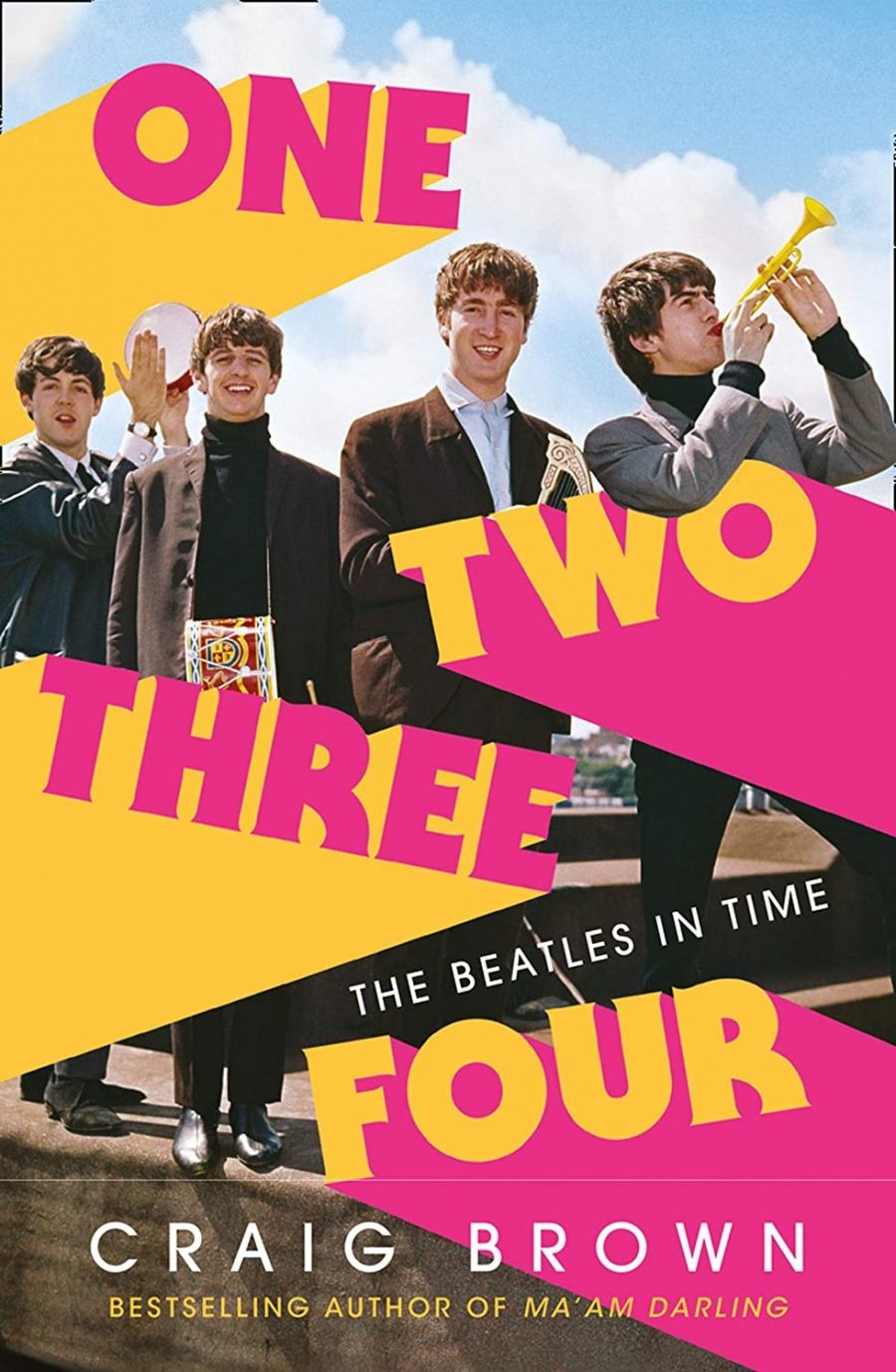
- Free Article: No
- Contents Category: Music
- Review Article: Yes
- Custom Highlight Text:
Chapter 148 of Craig Brown’s engrossing book is speculative fiction. Gerry and the Pacemakers are ‘the most successful pop group of the twentieth century’, their 1963 recording of ‘How Do You Do It?’, which the Beatles turned down, having launched their career. ‘To this day,’ Brown writes, ‘they remain the only artists to have achieved the number one slot with each of their first three singles.’ The last bit is almost true: they held that record for two decades.
- Grid Image (300px * 250px):

- Book 1 Title: One Two Three Four
- Book 1 Subtitle: The Beatles in time
- Book 1 Biblio: Fourth Estate, $32.99 pb, 642 pp
- Book 1 Readings Link: booktopia.kh4ffx.net/VGnkJ
It is only because of the music that Brown’s book exists, but there is curiously little about it in One Two Three Four, and when musical matters are touched on, one senses authorial fudging. There is also the odd howler. David Mason played a brightly piercing piccolo trumpet on ‘Penny Lane’, not, as Brown insists, the flugelhorn that he’d played in the première of Vaughan Williams’s Ninth Symphony some eight years before. Still, mention of Mason’s classical credentials provides some context, and that, above all, is what this book offers: hundreds of bits of context.
Much of it comes from the sifting and synthesis of existing sources. Besides the official books, including The Beatles Anthology (approved by the Beatles themselves), Mark Lewisohn’s several histories, and classics such as Ian MacDonald’s Revolution in the Head: The Beatles’ records and the sixties (1994), there are myriad volumes by people in the Beatles’ lives. These include two memoirs of John by his first wife, Cynthia, another by his sister Julia, and a fourth by his father’s second wife, Pauline. There’s the original drummer Pete Best’s autobiography, and a biography of Jimmie Nicol, who deputised for Ringo when he had his tonsils out; there’s John, Paul, George, Ringo and Me by the Beatles’ press officer Tony Barrow, and The Cutting Edge by their hairdresser Leslie Cavendish. Brown admits that ‘virtually everyone who ever worked in any capacity for the Beatles seems to have put pen to paper’.
 The Beatles wave to fans after arriving at Kennedy Airport, 1964 (photograph via United Press International/Wikimedia Commons)
The Beatles wave to fans after arriving at Kennedy Airport, 1964 (photograph via United Press International/Wikimedia Commons)
If half this book’s words are direct or indirect quotations, it is their ordering and juxtaposition that bring insights. Conflicting views are presented and weighed, often silently. Opinions emerge without seeming to have been stated by the author. Brown evidently has no time for Yoko Ono and little for Lennon, post-Yoko. She is talentless; together they’re spoilt children. Alexis Mardas – ‘Magic Alex’ – is ‘perhaps the most fraudulent of all the Beatles’ hangers-on’. Having threatened to sue the New York Times for calling him a charlatan, Mardas settles, on the condition the paper make it clear that ‘charlatan’ doesn’t imply ‘conman’. In fact he was both, and he cost the Beatles around $8 million in today’s money, though they were too stoned to notice. It was Alex who poisoned the group’s relationship with Maharishi Mahesh Yogi, portrayed here as bewildered and hurt by the Beatles’ sudden desertion.
Sometimes Brown even contextualises the context for clarity. When Judy Garland shows up unexpectedly at one of Brian Epstein’s dinner parties, the Beatles manager having forgotten he’d invited her, the chapter ends: ‘At this moment, Judy Garland has a little under five years left to live and Brian Epstein exactly three years, two weeks.’
In addition to reading books Brown has also been on Beatles tours in Liverpool, standing in suburban kitchens and bedrooms, being reprimanded by the guides (characters from Little Britain) for taking notes or recording their ‘private’ commentaries. He soon tires of this: ‘“John, Paul and George all had their hair cut here,” says Stevie T proudly. I think of asking him why Ringo never did, but the question evaporates in my mouth.’
The book’s 150 chapters include dozens of incidental characters, most touchingly Eric Clague, the off-duty policeman who ran over Lennon’s mother, Julia. When the Beatles became famous, he read in a newspaper that John’s mum had been killed by a car in Menlove Avenue and realised he’d been its driver. By then, he was a postman whose rounds included Paul’s home. Every day, he delivered sacks of Beatles fan mail to the address.
‘The Beatles shone so brightly,’ Brown comments, ‘that any one caught in their beam, no matter how briefly, became part of their myth.’ The remark is made in relation to the video of ‘Hey Jude’, in which the group were joined by a crowd of fans. We meet the young man who ends up playing Ringo’s tambourine and the young woman in the yellow dress (whose boss thought she was home sick that day). But who is the ‘old geezer’ with the carnations behind his ears? No one knows. He’s ‘the British equivalent of the umbrella man in Dealey Plaza,’ Brown suggests.
It was eleven weeks after President Kennedy’s assassination that the Beatles made their conquest of the United States, watched on The Ed Sullivan Show by a fourteen-year-old Billy Joel, thirteen-year-old Tom Petty, twelve-year-old Chrissie Hynde, and seventy-three million others. The viewing figures (second only to the aftermath of the assassination) are an indication of the scale of the Beatles’ fame. Another is that, six months later, before their second US tour, they were invited by Lyndon Johnson to be photographed laying a wreath on Kennedy’s grave. They politely declined.
When it ended, the Beatles were still in their twenties. Brown’s final chapter is a fast rewind from Brian Epstein’s autopsy to where the book began, Epstein walking down the Cavern steps and into history.


Comments powered by CComment